#Satsuma Domain
Explore tagged Tumblr posts
Text
Sean bienvenidos, japonistasarqueológicos, a una nueva entrega sobre Japón en la que explicaré de lo más básico a lo más complejo, relacionado con su geografía, prefecturas, regiones, e iremos indagando por su historia hasta llegar a las reformas de la era Meiji entre sus muchas reformas para modernizar al país. Una vez dicho esto, pónganse cómodos, que empezamos. - 1192-1603: División provincial. Japón estaba dividido en provincias, a las cuales se les denominaba (国, kuni). Este sistema administrativo fue heredado del sistema ritsuryō, de influencia china. En la práctica, el shōgun nombra al 守護 (shugo): Qué son los gobernadores militares de cada provincia, que estaban encargados de mantener el orden y recaudar dichos impuestos para el ejército. 地頭 (jitō): Eran los administradores locales de las fincas o villas específicas, que controlaban la recaudación de impuestos. Además, implantaron justicia en sus tierras, como un noble en la Europa feudal. - ¿Qué es todofuken ? Se trata del acrónimo del sistema japonés territorial y administrativo en prefecturas durante la era Meiji, durante la cual el territorio estaba dividido en haihan-chiken. ¿Qué entendemos por esto? En 1869, los cuatro dominios principales (Satsuma, Chōshū, Tosa e Hizen) devolvieron sus tierras y las cedieron al emperador, lo que se conoce como, henjō y en 1871, se implementó oficialmente el haihan-chiken, aboliendo todos los han y reemplazándolos por 305 prefecturas iniciales (aproximadamente) que luego se consolidaron en las 47 prefecturas que vemos en la actualidad. El ritsuryō era un sistema legal y administrativo centralizado adoptado en Japón durante los siglos VII-VIII, inspirado en el modelo chino de la dinastía Tang. - Espero que os haya gustado y nos vemos en próximas publicaciones. Que paséis una buena semana y una muy buena feria. Hasta la próxima. - Welcome, Japanese archaeological scholars, to a new installment on Japan in which I will explain everything from the most basic to the most complex, related to its geography, prefectures, and regions. We will delve into its history until we reach the Meiji era reforms, among its many reforms to modernize the country. With that said, make yourselves comfortable, as we begin. - 1192-1603: Provincial Division. Japan was divided into provinces, which were called provinces (国, kuni). This administrative system was inherited from the Chinese-influenced ritsuryō system. In practice, the shogun appoints the 守護 (shugo): The military governors of each province, who were in charge of maintaining order and collecting taxes for the army. 地頭 (jitō): They were the local administrators of specific estates or villages, who controlled tax collection. They also implemented justice in their lands, like a nobleman in feudal Europe. - What is todofuken? It is the acronym for the Japanese territorial and administrative system based on prefectures during the Meiji era, during which the territory was divided into haihan-chiken (a prefectural division). What do we mean by this? In 1869, the four main domains (Satsuma, Chōshū, Tosa, and Hizen) returned their lands and ceded them to the emperor, which is known as henjō. In 1871, haihan-chiken was officially implemented, abolishing all han and replacing them with an initial 305 prefectures (approximately), which were later consolidated into the 47 prefectures we see today. Ritsuryō was a centralized legal and administrative system adopted in Japan during the 7th and 8th centuries, inspired by the Chinese model of the Tang Dynasty. - I hope you enjoyed it, and I'll see you in future posts. Have a great week and a great fair. See you next time.




#日本#歴史#ユネスコ#考古学#art#history#japan#unesco#geography#japan photos#photos#art on tumblr#artists on tumblr#culture#historyjapan#geografia#Geography
56 notes
·
View notes
Text
His healer
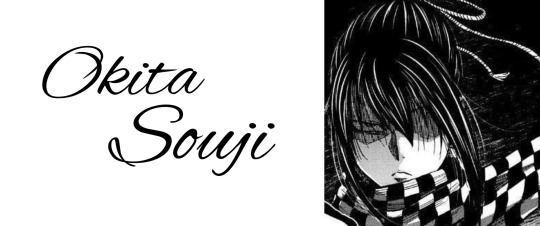
For some reason I just love writing about Okita a lot. This is a one shot this time. Okita x reader again..
Synopsis: AU universe where you treated Okita’s illness as one of the best doctor’s in Kyoto and slowly grew attached to him.
TW: kind of angst but mostly fluff.
WC: 943
The moment you were summoned by the leader of the Shinsengumi to check on someone’s condition, you knew you couldn’t decline the man known as Kondo Isami. He was well respected and so were his men. All you were known for was being one of the best doctors in Kyoto. You studied all sorts of medicine and healing practices.
A few days after the ikedaya incident, a young boy in his early twenties laid in his bed panting heavily. Upon finding out what his name was: Okita Souji. He was the first division captain and former chief assistant of the mibu rishigumi. You heard of the incident that lead many dead from Chousou and Tosa clans. The political chaos between the factions broke out leading many ronin began assassinating each other.
As you made your way to the Shinsegumi base holding your supplies in your bag. Many of the members were already gone on their patrols. “Oh you must be the doctor,” Kondo greeted you at the entrance as you smiled and nodded. Truth be told, you were young and talented in your field. You were quite surprised your name travelled through most of Kyoto reaching the ears of the Shinsengumi to summon you.
Okita at first was very reluctant with your help. He kept telling you that he was fine and to go away. You noticed that when he coughs and struggled to sit up, you had requested to examine his chest area with your stethoscope with a soft smile. He couldn’t figure out why someone like you kept persisting on helping him.
Overtime you kept checking on him and started to give him the necessities to treat the bacteria in his lungs. Okita started to open up to you about his life and how he became a samurai with his friends which put a smile on your face. He was very kind to you when he slowly starts to trust you’re not trying to kill him or anything. You were feeling sorry for him and his condition since you knew he wanted to help protect those close to him, but was stuck in bed for months. He talked about Kondo-san a lot so you had an idea that was his closest person to him.
“It seems that you’re recovering faster than I thought. I guess the fresh mint has been working well with your lungs. Your respiratory tract seems to be almost clear.” You had sat next to him while wondering what he was going to do next. You only had known him for about a month which didn’t feel long.
Okita was smiling and was going to say something before Kondo walked in with free tea. “You’re looking a lot better,” he noticed Souji was moving more freely thanks to your help. You couldn’t help but giggle at their interaction. The young boy was happy to be able to get back and fight for Kyoto. It was risky trying to get involved with any ronin or samurai since the risk of dying is high. You couldn’t help but feel slight attachment grow but you pushed the thought away. Kondo noticed your mind was in a different world and asked if you were alright.
“Oh yes! I’m fine. I’m thinking I should be getting back soon.” You stood up but you couldn’t help but noticed the slight frown on Okita’s features. You saw a few other Shinsengumi members in the hallway spying in on the conversation and wanted to celebrate with Souji for his recovery. You quickly slip through the door as they all seemed busy and left their base.
You had wondered what it was like being a samurai and feeling respected by the townsmen. There was a lot of trouble with Chousou domain and their affiliation with Satsuma domain as well. Maybe it was best to forget about it all and move along like you’re used to; going into peoples homes and treating civilians was mostly your job. You got some money but mostly you prefer their hospitality over the money since your family was already wealthy.
As you almost made it back to your house near the Kamo river which was relatively close to Yagitei where the Shinsegumi’s headquarters were located. You heard someone behind yell for you to wait up. You were confused hearing your name being called out, till you saw it was Okita catching up to you. “You didn’t say you were leaving for good,” Okita stopped in front of you giving you a rather sad look.
“Kondo-san said you weren’t coming back,” Okita fell silent leaving you to feel solemn.
“Okita-san, you don’t need me anymore, it seems that my job is done and I’m happy that you’re all better. So, please, don’t push yourself hard and I’ll be ready to help you or anyone else that needs me again.” You gave him a gleeful smile but it wasn’t enough for him to whine and to see you again.
“Awww, how about I come see you when we’re both free? I don’t like the idea of never seeing you again.” The last phrase had him puffing his cheeks a bit making him look cute how stubborn he was. He didn’t want to let you go? You thought over it but nodded, you would love to get to know him better even if there’s risks in getting close to him.
“Okay, than it’s settled. I’ll see you around, Okita-san.” Little did you know this was just the beginning of your new profound friendship that would blossom to something anew and future with him.


Note: sorry I promised more Anubis but I really been dying to do this piece for a long time. I’ll get back on Anubby soon~
#record of ragnarok#shuumatsu no valkyrie#ror x reader#okita snv#okita soji x reader#okita souji x reader#okita ror#okita soji#okita souji#okita souji ror#record of ragnarok x reader#shuumatsu no valkyrie x reader
66 notes
·
View notes
Text
Hakuoki Travel Guide "Mount Tennōzan"
This content comes from the games... I forget which one it was on the vita. To my recollection, there are locations on maps related to the Shinsengumi and clicking on certain areas gets you some character commentary about the location. There's also a section where you can look at the Shinsengumi captains' rooms too... I've taken to labelling these as "Travel Guide" content because it sorta fit, and I don't have the actual name.
Anyway, I only have two of these saved, and since I could actually translate them both in a day, I decided to post them... as I couldn't work on that last drama CD of the set I was last working on previously since my brother is visiting. Those particular dramas take a while to translate, and I typically spend more than a day working on those.
Enjoy!
Hakuoki Travel Guide "Mount Tennōzan" (天王山)
Translation by KumoriYami
Shiranui: Mount Tennōzan. Thanks for helping the Choshu who escaped during the Kinmon incident/Hamaguri Gate Rebellion.
Kazama: It was merely a coincidence, those guys knew that they were at the end of their ropes.
Kazama: But compared to them, the Shogunate is completely unfefined.
Amagiri: At that time, the Satsuma Domain, which we are affiliated with, was still in a position to attack the Choshu soldiers.
Amagiri: The Choshu must have resented the Satsuma.
Shiranui: Yeah, they hated them done to their very bones. Thanks to the Satsuma and Aizu, they became enemies of the Imperial Court.
Shiranui: Now they've formed the Satchō Alliance to overthrow the Shogunate together, humans are truly interesting.
Kazama: It's just that their interests happened to align when facing a common enemy.
Kazama: Betraying their comrades is a nothing out of the ordinary for humans.
Shiranui: That's not to say that it's always like that, but it really does that not happen.
Kaoru: Oh my, it seems that everyone is here, have I disturbed you?
Kazama: I didn't ask you to come here.
Kaoru: As the leader of the Western oni clans, such a response is truly hartless.
Kaoru: Seldom do the Tosa and Satsuma agree to an alliance, so please look after me in the future.
Kazama: Tosa? In my opinoin, they're just a hypocritical domain.
Amagiri: I heard that hte Lord of the Tosa Domain is highly trusted by the shogunate.
Kazama: Yet, the Tosa have secretly joined forces with Satsuma, which is aiming to use force to overthrow the shogunate. In the end, that's just how humans are.
Shiranui: A Satsuma-Tosa alliance? I thought the Tosa were just being smart about the situation and moving towards the side that held the advantage.
Kaoru: Oya, what's wrong with being smart about the situation?
Nagumo: The Tosa domain is doing its utmost to survive between the cracks.
Amagiri: The Nagumo family seems to be very active in assisting the Tosa Domain, may I ask what is the reason for this?
Kaoru: You, who are also cooperating with Satsuma and Choshu, are asking me such a question?
Kazama:...We are merely repaying an old debt, it would be ridiculous to call it assistance.
Nagumo: The Nagumo family is the same, we're just repaying the favour of shelter with a little help.
Kazama: I don't know what kind of trick you're playing, but if you get in my way, I'll show no mercy.
Kaoru: This... it appears that I am truly despised.
Kaoru: Today just to greet everyone who had gathered here.
Kaoru: Then, I'll be leaving first.
Shiranui:...Has the Tosa, which had been biding their time/holding back, finally taking action/making their move?
Amagiri: However, it remains to be seen if they've truly join the anti-Shogunate faction.
Kazama: It's true that they've joined it. Humans has joined. Human beings will ultimately choose profit/what benefits them, and the Tosa are not an exception.
Kazama: From this point on, whether it's the domains or people, they will all distance themselves from the Shogunate, until the Shogunate ends up being completely isolated and collapses.
Kazama: If there are still people who would willingly follow them until the end… I would really like to meet such a fool.
---end---
7 notes
·
View notes
Text
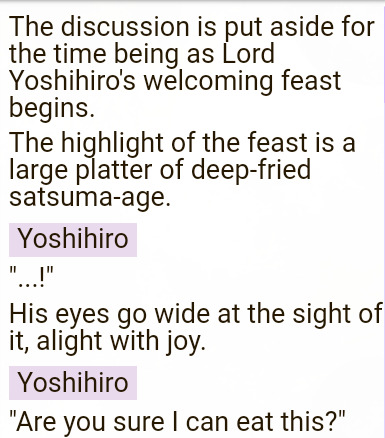
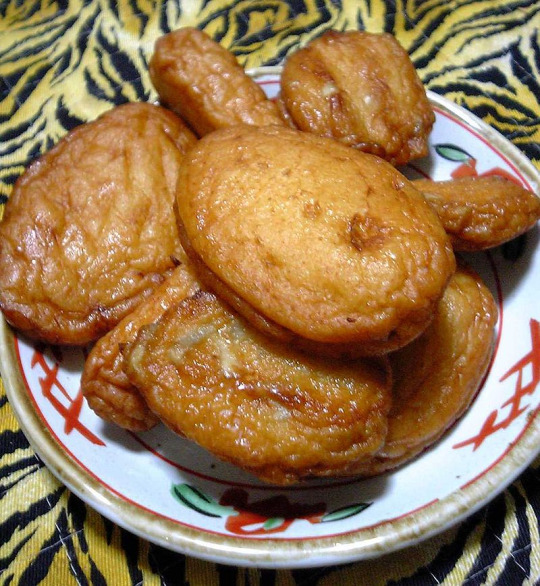
Satsuma was the old name of the Shimadzu domain, Satsuma Province. Today, it's part of the Kagoshima Prefecture.
Other people outside the area call it that way because it was where the food came from, but locally in Satsuma it was called tsuke-age. It's still called that way in Kagoshima even now.
It was said that this food came to be when the people of Satsuma improved on a recipe from Ryuukyuu, who they trade with, called chikiaagi. The basis of it is fried fish paste (surimi), but it has many variations across Japan. For example some may add tofu to it, or maybe mushrooms and vegetables.
Though, as with many other things this is not historically correct. It's believed that it was only invented and became a local staple in the time of Shimadzu Nariakira 島津斉彬, who lived in the 1800s. The Sengoku era that this game depicts is the mid-to-late 1500s.
8 notes
·
View notes
Text

(A print of the 1868 Battle of Ueno [source])
Okay, so this is a ways off, but what follows is an attempt to briefly outline for your enjoyment and edification what a hypothetical book by me on the Boshin War would look like.
First, it would follow Ishii Takashi's view that this was not one war, but three in one.
One side, the nascent Kyoto government, was consistent throughout. The other was not.
So we have the war from Kyoto to Edo against the former Shogunate, the war in Tohoku against the Northern Alliance, and the war in Ezo against the so-called Republic
Ōyama Kashiwa, whom I mentioned earlier, calls it "the Boshin campaign," which I think also has some utility.
I would also very sharply distinguish between the combatants fighting the Kyoto government. the Northern Alliance was not "pro-shogun," though it was allied with the former Shogunate's army
this is because of a thousand years of precedent of regional semi-autonomy. I wrote my dissertation on this. No, it doesn't matter what the tourist website you encountered told you, they're wrong.
You need to understand the Northern Fujiwara to understand the Tohoku alliance.
a longue duree perspective will likewise be necessary, because the outcome of this war, especially in the Tohoku region, was decided decades in advance, in part because of famine and depopulation.
they could never have won, not for lack of technology but because of the Tenpo Famine.
It will be brutal to write about the war, as writing about war necessarily is, because the so-called imperial army chose to exercise such brutality. They made it illegal for Aizu domain to bury its own dead, and thus so profoundly polluted the land that some Aizu survivors became Christian.
We will also need to appreciate the role of the foreign powers beyond what is normally spoken of in what English scholarship exists. the Northern Alliance petitioned the US for aid. the British were actively running guns to Satsuma. The French military mission was embedded in the Shogunate Army.
Women in combat, likewise, must be given attention, and no, I'm not simply speaking of Nakano Takeko.
Yamamoto Yae, for one, is right the hell there.
We will have to dismantle myths about the war, too, like the claim that the Tohoku alliance fought to restore the Shogun and hated guns.
But especially we will need to underline that Enomoto's government in Hakodate was. not. a. republic.
We will need to also underscore how this was significantly the samurai caste fighting itself, because there are petitions written by townsmen and farmers begging both sides to knock it the fuck off, at least long enough to bring the harvest in.
Finally, we will need to understand that the Boshin War, in a sense, didn't really end. Its survivors on all sides got tied up in different movements over the course of the Meiji era-- some were Saigo's men in the Seinan War, others were Itagaki's allies in the Freedom and Popular Rights Movement, and...
….until the 1920s, saying anything against the official imperialist line was in some cases punishable by ostracism and prison.
So, who broke through that silence? How did they do it?
We will have to give them their due.
(cough his name was Dr. Yamakawa Kenjiro and he blackmailed the imperial court into backing the fuck off cough)

#boshin war#bakumatsu#shinsengumi#japanese history#aizu domain#sendai domain#sendai#tohoku#samurai#northern alliance
12 notes
·
View notes
Text
[A] luscious Owari Satsuma citrus tree, whose species was originally imported from Japan, currently experiencing the ravaging effects of an aphid infestation. [...] Where did they come from? [...] And a question that nineteenth- and twentieth-century individuals may have added is, who is to blame? Jeannie N. Shinozuka’s monograph, Biotic Borders: Transpacific Plant and Insect Migration and the Rise of Anti-Asian Racism in America, 1890-1950 [...] [examines] such human and nonhuman interconnections [...] [and] meditates on such questions in the historical setting of the American empire, including its transpacific borderland.
Toward the end of the nineteenth and through the twentieth century, the already present anti-Asian racism in the United States was infused with a conservationist attitude of sustainable yield and efficient use of the vast but vanishing natural resources of North America.
---
Unsurprisingly, these racial anxieties appeared just as the American empire expanded well beyond the continent’s borders. The economic threat of chestnut blight or citrus scale played into a native invasive binary that conveniently placed blame for the species’ decline, along with pest and disease introductions, on poor and immigrant groups, while excluding and erasing a longer colonial history of importations of destructive plants and animals by colonial and antebellum planters. These fears were founded not just in the economics of decline, based on a fear of the threat posed to cash crops often grown on increasingly large-scale farms, but also in jealousy surrounding agricultural innovations [...] of certain immigrant farmers [...] in a society plagued with racial anxieties of a so-called yellow peril. Paradoxically, wealthy American citizens interested in beautifying landscapes often held an orientalist fascination with a fetishized and consumable version of a Japanese countryside in the form of tea gardens. [...]
---
The work also discusses the role of newly ordained technocratic officials in giving supposed scientific validity to attitudes toward plant, animal, and human invaders from the Orient.
Plant biologists such as [D.F.] and entomologists [...] were on the forefront of crusades to prevent economically damaging insects and plant diseases from entering the borders of the United States and “degrading” the native stock. Many of these individuals, like [D.F.], were closely associated with some of the leading eugenicist organizations, for example, the American Breeder’s Association, within the United States. Their efforts at plant quarantine culminated in Plant Quarantine Number 37, or PQN 37, a law intended to prevent diseases and infection from foreign animal and plant bodies. This law set a precedent for similar policies regulating humans perceived as alien, including the Immigrant Act of 1924, which limited immigrants from southern and eastern Europe, while completely excluding individuals from Asia. Similarly, officials, [...] [entomologists] included among them, seized and destroyed the property of Japanese immigrants [...].
---
Shinozuka’s work is [...] a contribution to environmental history and Asian studies, [and] it is also a fresh conversation on borderlands and the role that [...] migrant groups, played in such porous places as the US Mexico border and Hawaii, the Pacific gateway to the US empire. Both domains offered opportunities to immigrants and scientists alike [...]. [I]mmigrant labor provided muscle power to corporate-owned American sugar plantations in Hawaii while also experiencing accusations of importing such damaging insects as the termite or Oriental beetle. What Shinozuka makes clear is that while these insects may have originated in southeast Asia, their spread was enabled by the context of American colonialism and empire. The trifold factors of urbanization, industrialization, and monocrop agriculture, all promoted in the interest of American business and marketed as a modernization effort in supposedly backward places like Hawaii, created the perfect circumstances for insects to swarm and disease to spread.
---
All text above by: Jacob Gautreaux. "Review of Shinozuka, Jeannie N., Biotic Borders: Transpacific Plant and Insect Migration and the Rise of Anti-Asian Racism in America, 1890-1950". H-Environment, H-Net Review. August 2024. At: h-net dot org slash reviews/showrev.php?id=60450. [Bold emphasis and some paragraph breaks/contractions added by me. Presented here for commentary, teaching, criticism purposes.]
14 notes
·
View notes
Text

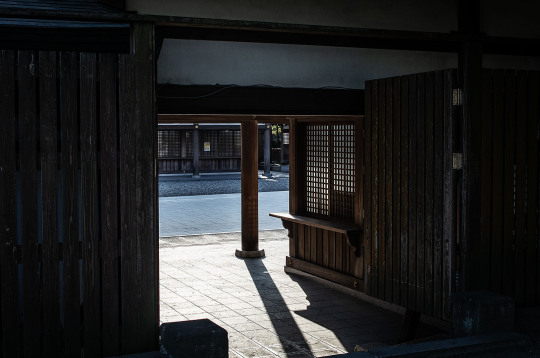



Terukuni Shrine, Kagoshima, Japan. The shrine is the residence of the kami (spirit) of Shimazu Nariakira (posthumously Terukuni Daimyojin), the 11th daimyo of the Satsuma Domain. Shimazu was passionate about education and was considered one of the most intelligent daimyo. He was the first person in Japan to acquire a daguerreotype camera in 1848, and the photograph of him that was eventually produced was the first photograph to ever be named an Important Cultural Property in Japan.
#queue#photography#travel#travel photography#kagoshima#terukuni shrine#history#kyushu#asia#japan#鹿児島#shrines
9 notes
·
View notes
Text
here is everything we know about seidou nagumo from the old timeline
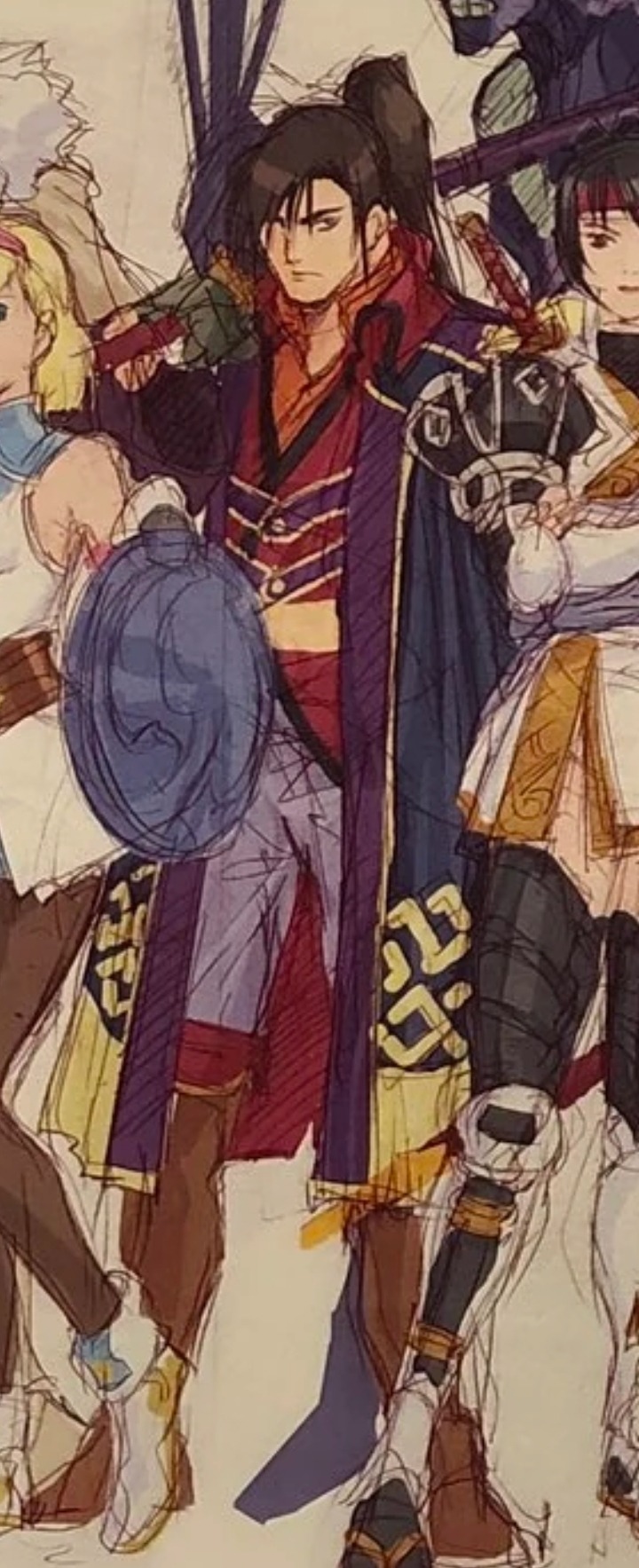
seidou nagumo was originally meant to replace mitsurugi in soulcalibur ii, but was scrapped. here is art of what he was supposed to look like
however, he was still kept in the canon storyline for soulcalibur even though we never saw him make an appearance

here we see him listed in one of the relationship flowcharts found in the canon "new legends of project soul" artbook. here are the things that we know about him based on this small tidbit of information:
he is from the satsuma domain. according to this artbook chart and to a quick wikipedia search:
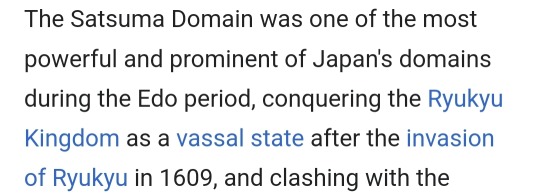
with this we start to get an idea of what his possible relationships are with the main roster. the ryukyu kingdom was where maxi came from. and we see that yagaji, who is canonically the man who made maxi his nunchaku and a good friend of maxi, was also the personal weaponsmith for the ryukyu king.
we know that seidou himself was a direct agent sent to infiltrate the ryukyu kingdom
we know that he was trained in the jigen style sword technique. a quick wikipedia search tells us that this art style is actually native to the satsuma region. and his master was actually the founder of that style

bonus: his master and mitsurugi have fought before
its not a lot but its definitely more than you would expect a scrapped replacement character to have. i personally really hope he makes a comeback in this new timeline. i think he has great potential to have fun and interesting rivalries with maxi and with mitsurugi. his design would be such a waste if they did nothing with him, i would love for them to reconsider his place on the roster
12 notes
·
View notes
Text
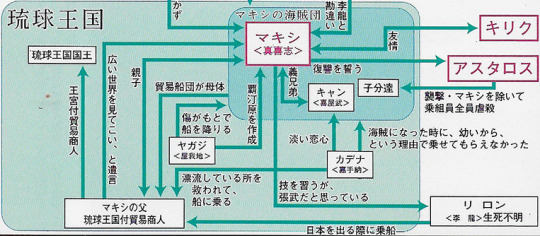
Some observations on this section relationship chart in Legend of Soulcalibur. (Showing only the Ryukyu Kingdom half from page 15. The rest deals mostly with the Korean characters.) The darker green section is about Maxi himself (in the red-lined box) and his pirate crew. From left to right:
Maxi's father was a merchant connected with the royal palace. (I'm paraphrasing.)
His dying wish was for Maxi to see the vast world.
Maxi's crew form out of his father's merchant fleet. (Loosely paraphrasing.)
Out of all the named characters here, only his sworn brother Kyam (キャン) is in the darker green box with the rest of the crew.
Yagaji (ヤガジ), who made Maxi's nunchaku Fatibal, disembarks from the ship owing to his injuries. (I can't find specifics for the life of me.)
There's also Cadena (カデナ)... or Kadena in New Legends of Project Soul, but I'll get to that. She started tagging along after being rescued as a castaway by Maxi's father. She became a pirate, but ended up staying behind because she was too young. (Probably the reason for this throwaway line from Kyam in Maxi's Soul Chronicle after Lyla is invited aboard: "Tch. Cadena's gonna be jealous.") Also, she had a bit of a crush on Kyam. (Rough translation: "faint awakening of love".)
Li Long, under the alias Zhang Wu (張武) taught Maxi nunchaku techniques on a ship out of Japan. Bold move of him to use the name of the assassin sent after him for deserting (he's mentioned elsewhere in this book).
On the right, we're back on familiar territory with Astaroth wiping out (most of) Maxi's crew. And Kilik's friendship with Maxi.
I cut it off, but that bit at the top right is about Xianghua mistaking Maxi for Li Long. (I swear I'm not misreading that.)
Speaking of Yagaji and Cadena/Kadena, according to New Legends of Project Soul (page 121), they got together at some point and had a son Shushin. It seems that Sushin was meant to figure in a side-plot involving the invasion of Ryukyu by the Satsuma Domain's forces.
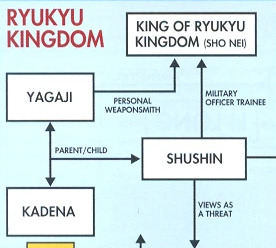
6 notes
·
View notes
Note
hi bea! i hope you’ve had a lovely day and had breakfast <3 if you didn’t what are you doing go eat
i just wanted to tell you that when i first saw your blog, i got super ridiculously excited because my favorite oc is called bea so. yeah. i really love her and some nicknames i gave her is like “bea-bug” or just “bug” because this girl loves bugs sm she knows waayyyy too many facts about them
have a good day and ily
sorry for taking so long to answer this I put it in drafts lol
I had a nice satsuma for breakfast which was good!
OMG SHE SOUNDS SO CUTE I LOVE HER ALREADY!!! I get the blurting facts that's so me, but space and physics are more my domain lol
It's so cool I chose the same name as your oc!
6 notes
·
View notes
Text
Hakuoki Shinkai Tenun no Shou Stellaworth Booklet “Her Long Day” Part 6
Still haven't figured out what I should do next.... I sorta wanna go translate the Shimabara Disturbance drama, but the tl I found has some parts that are missing text, and I just don't wanna go look up what I ned to fill in those gaps...
whatever. maybe i won't do that. good night. 😂 i'm too tired to think right now. waking up before 6 am really messes me up unless i'm travelling.
Hakuoki Shinkai Tenun no Shou Stellaworth Booklet “Her Long Day” Part 6
Translation by KumoriYami
Chǒushí · Kazama Moment 《1~3 o'clock》
It was 3 o'clock, the time when all plants slept, and when the gates of the underworld [I guess?] were open.
If things were as usual, I would have fallen asleep long ago…
Unfortunately, today I woke up, perhaps from hearing the sound of insects.
"……Huh……?"
As I huddled under my blanket, I heard something outside… a minute sound.
The chirping of insects was wrapped in the sound of the wind and the sound of footsteps on gravel.
...Was that the sound of a cat or dog walking by…?
I lifted up my groggy head head, and opened the door a finger-wide crack, and looked outside——
"——I didn't think you'd be awake at this time."
"……Eh?"
"Could it be those watch dogs are forcing you to work day and night?"
"……!"
My weary mind immediately cleared up, and my eyes widened.
Standing there was the one who had repeatedly crossed swords with the Shinsengumi and declared that he was going to take me away—.
"Kazama-san——"
"——Be quiet."
"Wah!?"
Just as the yell was about to leave my throat, my mouth was covered, and I could only desperately twist my body.
But Kazama-san's arm was like it was made of stone, and I couldn't pull away at all.
"It's useless, although female oni have powerful/strong vitality, their strength cannot be compared to that of a male oni."
"Uh——"
"……Listen, just stay quiet. As long as you promise not to yell, I will let you go."
I did my best to nod, and to my surprise, Kazama-san really did let me go."
"Why are you come here at this time? Could it be that you wanted to take advantage of how everyone's asleep..."
"That's ridiculous. Do you think that I'm the sort of vulgar man who would attack a woman at night?"
“……”
What happened just now, I did really feel that this was similar to being attacked…. I always felt there was a sense of incredulity with this, so I asked again.
"….Then why did you come here? It doesn't seem like you've answered my question yet..."
"……This flower/These flowers."
Kazama-san hesitated for a moment and handed me a flower.
"This is… a sunflower/These are... sunflowers…?"
"That's right. Early this morning, beautiful sunflowers bloomed in the garden of a house in the Satsuma Domain, and since I thought it'd be a waste if only I admired them. Thinking that, I involuntarily thought of your face. You are surrounded by a group of insensitive men all day long, and have no opportunities to see such beautiful flowers."
"Um......"
If Kazama-san's words were true, he really came just to send me this flower/these flowers…
"…….Even if you say that, with you suddenly coming here, I can't believe it…"
"Why suddenly? Is there something strange about a husband who treasures his wife giving her flowers?"
"——Wife?"
"Of course, you are my wife."
…………As expected, I couldn't communicate with this person. Kazama-san slowly extend his hand towards me, who was at a complete loss for words.
"Of course, if you want me to take you away right now, isn't that another matter?"
"I don't....!"
I trembled and hurriedly took a step back.
Kazama-san's hand abruptly stopped.
".......?"
"Hmph… Who would have thought that there would be a watchdog awake at this time."
Kazama-san sighed, turned around, and then disappeared into the darkness.
"——Let's meet again someday in the future. Next time, it will have to be in a place where no one will disturb us."
Yinshi · Sannan Moment 《3~5 o'clock》
——At that moment, a voice came from the depths of headquarters.
"——Apparently an uninvited guest came?"
"Ah…… Sannan-san……!!"
"——Oya. To go as far as to intrude at this time, how truly careless."
Sannan-san looked in the direction Kazama-san disappeared in and lowered the hand he had on his sword.
At the same time, I collapsed to the ground, as if the ties around had me had been unraveled.
"……Fu……"
"It's alright, Yukimura-kun. Did you get injured?"
"Nn. I'm okay. Thank you……"
I sat paralyzed on the ground and looked up at Sannan-san,, and noticed tha tmy hands were shaking.
Although he was joking about that bitter experience, it really could have been quite dangerous.
——If Sannan-san hadn't come, what would have happened?"
While I trembled as I imagined that, Sannan-san, he——
"……Forgive me/I apologise."
He took hold of my hand, and slowly pulled me so I could stand up, then he wrapped both of his hands around my hands.
"——As expect you're terrified, your hands are still shaking now."
"……Yes. As soon as I thought that I was saved, all the fear came bursting forth……"
"I'm sorry. If I was able to notice a bit sooner, you wouldn't have been so scared."
"N-No, it's not Sannan-san's fault! You saved me…"
"……Hehe. Yes. At least the worse was avoided."
Sannan-san urged me to sit down, and the two of us sat by side in the corridor.
Even though my body was still shaking now, he smiled.
"It's alright, I'll sit with you here and accompany you until you calm down."
"……"
"Apparently, I'm meddling——"
"No….. if Sannan-san doesn't mind…. please."
Perhaps my words went against his expectations, so Sannan-san's eyes wiedened, and he was speechless.
".......Are your words sincere?"
"Nn... is that no good....."
".......You aren't afraid of me even though I've become a rasetsu?"
Sannan-san gazed into my eyes, and I laughed/smiled.
"......I think that genuinely scary people wouldn't say that sort of thing. Although it's true that Sannan-san hasbecome a rasetsu……."
"……But?"
"But, I think that your heart is the same as it was before."
Actually, until just now, Sannan-san had been saying consoling words to me,…. .
"......Oya. After hearing such adorable words, I can't do anything bad now."
Sannan-san stroked my head, as if to say that he had surrendered.
"Then… until you can peacefully fall asleep…"
Afterwards, Chizuru's moment
—Then, after that—
Sannan-san stayed and chatted with me until the sky faintly became green.
I completely calmed down and returned to my room as well.
"Today… I should say yesterday, a lot of things happened from morning until night……."
I got under the blankets again, and what happened all day long began to gradually resurfaced in my mind again.
"Waking up early, seeing Souma-kun, cooking together with Heisuke-kun…… going on patrol……"
If I fall asleep now, I didn't know if I'll be able to sleep before daybreak.
"......In the middle of the night, Kazama-san came over for some reason…. then… Ah, Hijikata-san…. I don't know if he'w awake after that…"
Incredibly, as soon as I was covered with the blanket, I immediately felt drowsy. Tired to the point where I couldn't resist.
"……"
With my narrowing field of vision, between the gaps of dreams of reality, I mumbled to myself.
"……Tomorrow too…… I'll work hard……"
Until I was woken up again shortly after by the sound of birds, a new day was about to start again. I finally slept peacefully again so I could get a moment's rest——.
----end----
#hakuoki#hakuouki#hakuoki other translation#kazama chikage#sannan keisuke#sanan keisuke#yukimura chizuru
28 notes
·
View notes
Text
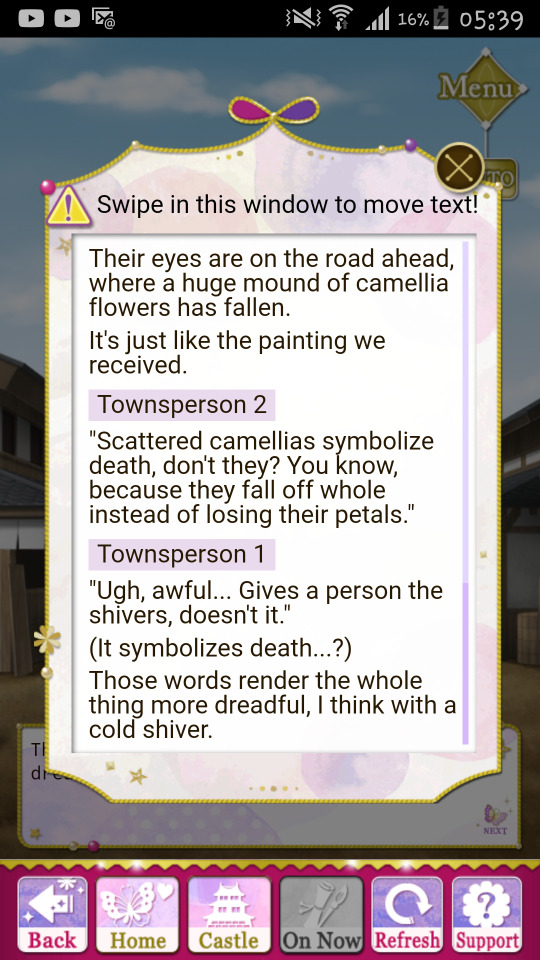
This is actually apparently a misconception that many people have that people in the feudal era thinks like this. This is such a late-date legend that hails from around the ending of Edo era, entering the Meiji.
This story event takes it to such extremes that even the citizenry have a fear of it, but the commonly spread legend is actually just the samurai that don't like it. It falls as a whole, like a head that's chopped off. It has the connotation of execution, which samurai supposedly find to be shameful/dishonourable.
The camellia is usually contrasted with sakura, whose scattering petals are considered "beautiful" and graceful, and a more befitting image for a samurai's death.
This narrative really doesn't make any sense in the first place, because even if a samurai commit seppuku honourably, their heads get chopped off too, so what's the difference?
Anyway. Even during the Edo era the samurai loves camellias. Many houses would go out of their way to breed and raise camellias.
The rumour of camellia hate supposedly came about because the people who toppled the shogunate, the clans who hail from Satsuma province and Choushuu domain of Nagato, famously really loved their camellias. The people of Edo (the shogunate capital, now Tokyo), who view those people as traitors or rebels, hated them and regularly complained about them.
Perhaps because the Edoites were connected to the old shogunate, the story of "these people from the bygone era dislike of camellia-loving people" somehow morphed into "samurai don't like the camellias themselves".
24 notes
·
View notes
Text
Tosa Calling
Although I know it's been a year since Like a Dragon: Ishin! released, it wasn't until I came back from my trip to Japan that I managed to find some time to sink into the hefty title. I know, I know. It's shameful! But in my defence, last year I was swamped with games. And lengthy ones to boot!
I mean, given the evidence, I think, dear readers, it would not be wrong for me to ask that y'all give a gal a break. Especially because playing video games and writing up my impressions of them is a hobby. And having a full-time job does not make playing games, reading books and writing stories any easier. Throw in the FOMO from watching whatever is popular on streaming and also socialising with real-life people, I think the fact I manage to get through games at such a steady clip is a commendable exercise.
Anyway, back to the topic at hand. Or, at controller, if you'll pardon the terrible attempt at wordplay.
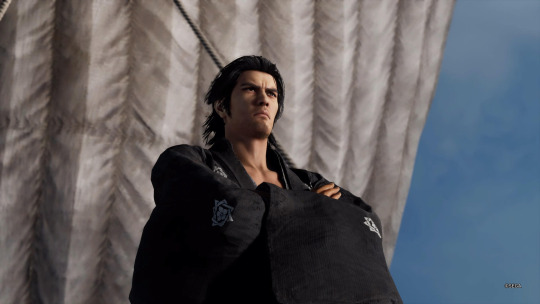
Unlike the Yakuza games that came before it, Like a Dragon: Ishin! is a game set in the mid-1800s as Japan grappled with foreign diplomatic and military pressure to change. And instead of stepping into the shoes of Kiryu Kazuma, players are thrust into the shoes of one Sakamoto Ryoma - a real-life historical figure who advocated for democracy, return of power to the Imperial Court, abolition of feudalism and the modernisation of Japan during the Bakumatsu period.
Of course, Like a Dragon: Ishin! does take a more fanciful approach to their interpretation of history as they have Ryoma playing double-duty with another real-life historical figure: Saito Hajime - Captain of the Shinsengumi's 3rd Division.
But, hey, what's a bit of artistic licence to give us some excellent blockbuster action scenes and build up a conspiracy about the Tosa loyalist party and the best interests of the budding nation of Japan? Why not even throw in a fight with Scottish merchant Thomas Glover too (which was passingly strange for me to deal with considering I visited Glover Garden while I was in Nagasaki while in Japan and failed to find nary a mention of how the man duked it out with Ryoma with a set of twin pistols)?
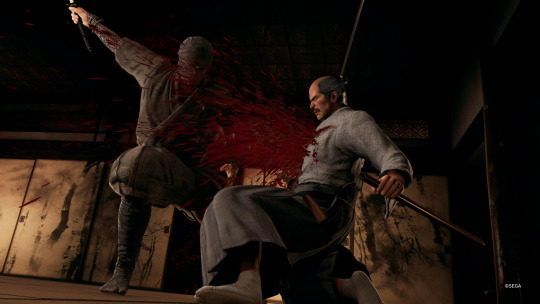
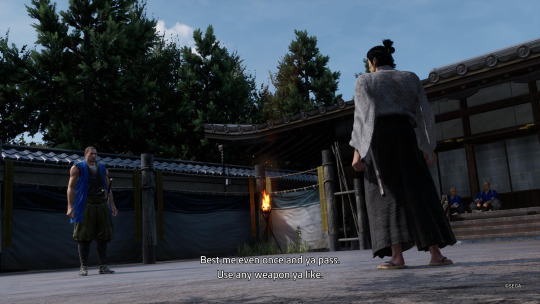
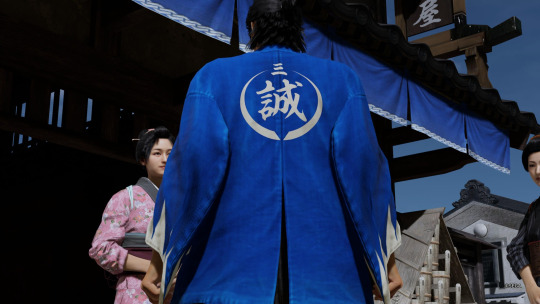
As always, Ryu Ga Gotoku Studio keeps the main story dramatic and relatively grounded with Ryoma on a quest for revenge when his adoptive father Yoshida Toyo is assassinated. The majority of the game then takes place in Kyo (the modern day equivalent being Kyoto) as Ryoma tries to hunt down the man responsible. He does so by deducing the style of swordplay and looking for dojos who teach Tennen Rishin.
It isn't long before he is informed that the Tennen-Rishi is practiced by the Shinsengumi. Ryoma soon joins the organisation, hoping to whittle down who among the captains was the killer.
Along the way, he must deal with a second 'Sakamoto Ryoma' who is trading with guns and other weapons to the Satsuma Domain and hatch a civil war in Japan in order to take out the Shogunate that had reined for nigh on 300 years. It later turns out that this second 'Sakamoto Ryoma' is his brother and leader of the Tosa Loyalist Party: Takechi Hanpeita (another real-life historical figure).
While the game does incorporate actual historical events such as the Ikedaya incident and the assassination of Sakamoto Ryoma at Omiya Inn, it does certainly take quite a few liberties of the actual events. Like how the person assassinated at Omiya Inn was just a stand-in and both the actual Ryoma and his brother Takechi survived for a final battle back in Tosa as they engage in battle due to competing ideologies.

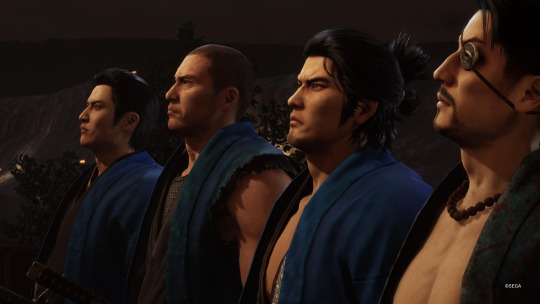
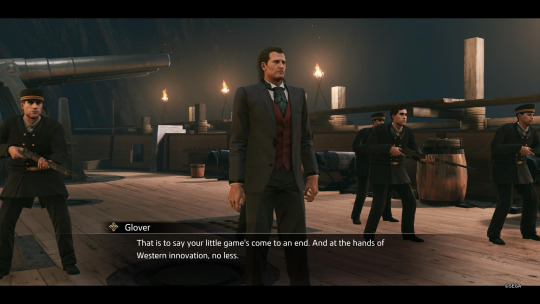
From a gameplay perspective, Ishin! only really incorporates one of the fighting styles from the Yakuza games. This, being of course, the brawler style. As Ryoma is a samurai, he also had a swordsman style (my default one that I used for most of the game) and mixed it up with the occasional use of a revolver. While these all had a variety of different abilities, I found myself focusing on swordsman and wild dance throughout most of my playthrough as they easily ripped through the fodder you faced on the streets and were mighty effective against bosses as well.
Unlike the other games, Ishin! also introduced the concept of troopers. This boosted Ryoma's health and granted him additional abilities that could be triggered in the midst of battle, such as triggering additional damage or conjuring a gravity well to draw all the enemies to one part of the battle arena.
This helped mix-up the combat, especially after hours of using the same moves and combos throughout the game.
Boss battles, too, forced me to vary my strategy. Rather than brute forcing my way through most enemies, I'd often have to play more defensively - seeking to use my stronger attacks only when necessary and throwing in the occasional heat action to give Ryoma some breathing space.
But while the story and the combat are worthy of praise, it was the side content in Ishin! that stole my heart. I loved all the wacky stories Ryoma somehow got suckered into. As is RGG tradition, there are also numerous minigames such as singing and buyo dancing. True, it didn't have a crane minigame but it DID allow me to play rock, paper, scissors with a geisha.
And my gosh, I have never been so glad my mother doesn't often see what I'm playing when I first went through the song: Truehearted Samurai. Initially, I was confused there were live-action actors. Then, I was bewildered when they started acting flirtatious even as I was trying to nail most of the notes for the very fast-paced song.
To be fair, the Sensual Healing portion of the geisha interactions also earned a raised eyebrow from me.
As for buyo dancing, it was probably the most tame of the mini-games (at least when it came to salacious material), but it was difficult to master. I'm no slouch when it comes to rhythm games and I very much enjoyed the dancing mini-games in Yakuza 5 and Lost Judgment but Ishin! was a different beast entirely with how it implemented its controls.
Overall though, Ishin! is a must-play for Yakuza fans. Though its replaced the shady crime drama with an historical period plot, it still retains the heart and soul of the Yakuza games. Especially because many of the character models have been reused, like Kiryu Kazuma acting as both Sakamoto Ryoma and Saito Hajime. Then there's Goro Majima as Okita Soji and Taiga Saejima as Nagakura Shinpachi.
Oft times, I had to ask myself if I wasn't just playing another Yakuza game with just a historical skin on top.
True, maybe I should have instead dived into Rise of the Ronin (I will play this game eventually as I've actually bought it), but Ishin! took precedence. Besides, it's not every day that one gets to play as THE Sakamoto Ryoma.
For anyone who might say otherwise, I'll shall simply retort with: ee ja nai ka.
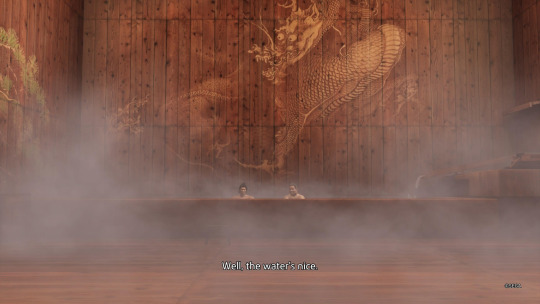

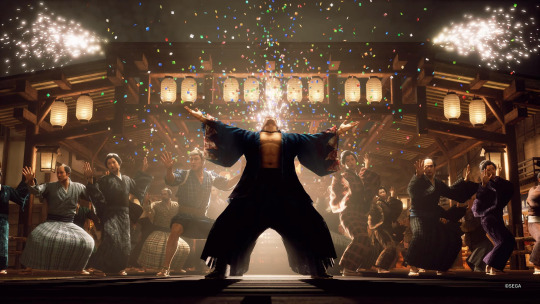
3 notes
·
View notes
Text
Events 5.5 (before 1950)
553 – The Second Council of Constantinople begins. 1215 – Rebel barons renounce their allegiance to King John of England — part of a chain of events leading to the signing of the Magna Carta. 1260 – Kublai Khan becomes ruler of the Mongol Empire. 1494 – On his second voyage to the New World, Christopher Columbus sights Jamaica, landing at Discovery Bay and declares Jamaica the property of the Spanish crown. 1609 – Daimyō (Lord) Shimazu Tadatsune of the Satsuma Domain in southern Kyūshū, Japan, completes his successful invasion of the Ryūkyū Kingdom in Okinawa. 1640 – King Charles I of England dissolves the Short Parliament. 1654 – Cromwell's Act of Grace, aimed at reconciliation with the Scots, proclaimed in Edinburgh. 1762 – Russia and Prussia sign the Treaty of St. Petersburg. 1789 – In France, the Estates-General convenes for the first time since 1614. 1809 – Mary Kies becomes the first woman awarded a U.S. patent, for a technique of weaving straw with silk and thread. 1821 – Emperor Napoleon dies in exile on the island of Saint Helena in the South Atlantic Ocean. 1821 – The first edition of The Manchester Guardian, now The Guardian, is published. 1835 – The first railway in continental Europe opens between Brussels and Mechelen. 1862 – Cinco de Mayo: Troops led by Ignacio Zaragoza halt a French invasion in the Battle of Puebla in Mexico. 1864 – American Civil War: The Battle of the Wilderness begins in Spotsylvania County. 1865 – American Civil War: The Confederate government was declared dissolved at Washington, Georgia. 1866 – Memorial Day first celebrated in United States at Waterloo, New York. 1877 – American Indian Wars: Sitting Bull leads his band of Lakota into Canada to avoid harassment by the United States Army under Colonel Nelson Miles. 1886 – Workers marching for the Eight-hour day in Milwaukee, Wisconsin were shot at by Wisconsin National Guardsmen in what became known as the Bay View Massacre. 1887 – The Peruvian Academy of Language is founded. 1891 – The Music Hall in New York City (later known as Carnegie Hall) has its grand opening and first public performance, with Tchaikovsky as the guest conductor. 1904 – Pitching against the Philadelphia Athletics at the Huntington Avenue Grounds, Cy Young of the Boston Americans throws the first perfect game in the modern era of baseball. 1905 – The trial in the Stratton Brothers case begins in London, England; it marks the first time that fingerprint evidence is used to gain a conviction for murder. 1912 – The first issue of the Bolshevik newspaper Pravda was published. 1920 – Authorities arrest Nicola Sacco and Bartolomeo Vanzetti for alleged robbery and murder. 1930 – The 1930 Bago earthquake, the former of two major earthquakes in southern Burma kills as many as 7,000 in Yangon and Bago. 1936 – Italian troops occupy Addis Ababa, Ethiopia. 1940 – World War II: Norwegian Campaign: Norwegian squads in Hegra Fortress and Vinjesvingen capitulate to German forces after all other Norwegian forces in southern Norway had laid down their arms. 1941 – Emperor Haile Selassie returns to Addis Ababa; the country commemorates the date as Liberation Day or Patriots' Victory Day. 1945 – World War II: The Prague uprising begins as an attempt by the Czech resistance to free the city from German occupation. 1945 – World War II: A Fu-Go balloon bomb launched by the Japanese Army kills six people near Bly, Oregon. 1945 – World War II: Battle of Castle Itter, one of only two battles in that war in which American and German troops fought cooperatively. 1946 – The International Military Tribunal for the Far East begins in Tokyo with twenty-eight Japanese military and government officials accused of war crimes and crimes against humanity.
0 notes
Text
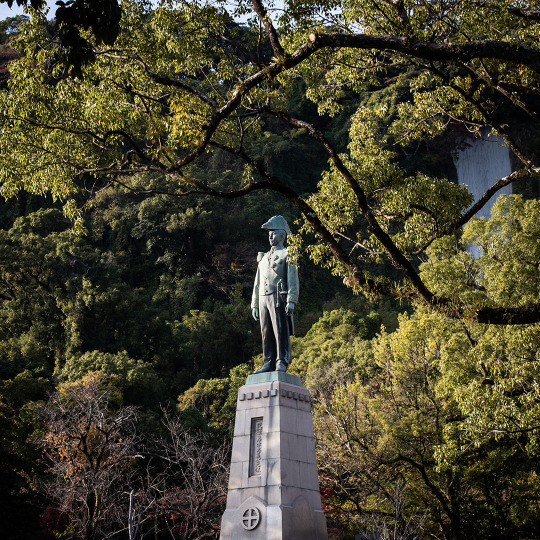
Statue of Shimazu Tadayoshi in Kagoshima, Japan. He was the last daimyo of the Satsuma Domain.
#queue#photography#travel#travel photography#kagoshima#鹿児島#kyushu#japan#asia#鹿児島市島津忠義公像#shimazu tadayoshi#statue of shimazu tadayoshi#history#statues
2 notes
·
View notes
Text
Go with the flow Take time Don’t rush around Be deliberate See something new Be outside ******** Favorites - Experience: Mac mac bossanova and Isamu Kenmochi stools at Honen-in (songs Shinkansen by Toninho Horta and Batucada by Segio Mendes) - Coffee: Thai macchiato and Kurasu Kyoto Station, macchiato at about life brewers - Spot: Shibuya Wine Bar Cabotte (split dishes and the white burgundy were great) - Dish: Roast pork at Complete Kyoto, Puttanesca at Marco Kyoto, Orange Thai Salad at Koikoi Shoten, Bear sashimi / soup at Gibier Miyama, 35 gyozas at Yasubei - Outdoor space: Eikando and the Silver Pavilion - Unexpected: Ebisu neighborhood (near the station) was quite nice, Mt. Fuji views ******** ##### TOKYO - adp ##### 22. F - Landing + Shinjuku (☀️45/63) **** land 2pm // take it easy **** Cat street + Harajuku **** Shopping in Shinjuku (NeWOMEN) **** 845pm / Kapi-san / Robata-Sho Shinjuku 23. S - The North (☀️44/57) **** Check bag transfer **** Yanaka Ginza? Sendagi? **** Matsuchiyama Shoden **** Kappabashi **** Sembikya: Persimmons, apples, satsumas, grapes **** Riedel Ginza / Domaine Takahiro **** Ginza (12-5p streets closed) **** Wine shop // Domaine Takahiko タカヒコ **** 6p Gen Yamamoto (CONFIRMED) **** 745p Nakameguro Iguchi Azabujuban (CONFIRMED) 24. S - Relaxing day in Nakameguro + Ebisu (☀️40/57) **** Ryusen-ji Temple (mame-daishi) **** Yamamoto Hamburg steak **** 3amours wine **** Drip coffee + pudding **** Dinner in Ebisu (Yasubei gyoza?) **** Tachinomiya (standing bars) **** Ebisu Yokocho (alley with small restaurants, bars) 25. M - Free day (☀️39/59) **** Transfer bags **** Tomigaya (Shibuya) https://www.japan-guide.com/chottozeitaku/170830.html **** Eat a cream sando **** Jazz bar? ##### HAKONE - Matsuzakaya Honten##### 26. T - transit to Hakone (🌦️50/59🌧️40/49) **** leave 730a from hotel for 759a Shibuya to Hakone-Yumoto (arrive 939a) **** Hakone Tozen Scenic Railway **** Outdoor Museum **** Lunch (soba?) **** Ropeway **** Choanji **** Dinner at hotel 27. W - Hakone + transit to Kyoto (☁️41/55) **** Tokkaido trail + Amasake tea house **** Hakone Shrine **** 430pm Taxi from Hakone Shrine (P1, toilets) **** 607pm (arrives 812pm) Shinkansen Odawara to Kyoto **** Gyoza? Enoteca Irodori? ##### KYOTO - Granbell ##### 28. R - rent bikes. Antiques. Cafes. (☀️46/61) **** お料理 Oryouri Miyama 29. F - northern Kyoto. Nature. Hiking. Fresh air (☀️46/59) **** Ruriko Temple? Enryaku-ji? **** GIBIER MIYAMA 7p (CONFIRMED)
0 notes